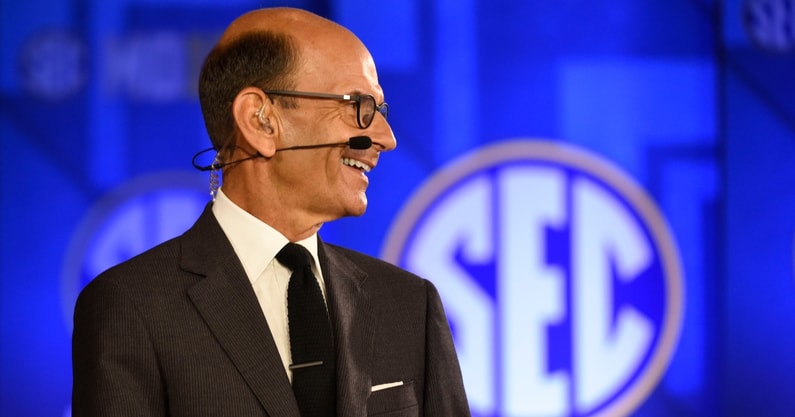
Paul Finebaum, the renowned college sports commentator and analyst, has recently voiced strong criticism regarding the Pac-12’s latest moves to add new member schools. As the landscape of college athletics continues to evolve rapidly, Finebaum’s perspective sheds light on the broader implications these changes may have on the balance of power within college football and the future of conference realignment.
Finebaum was particularly blunt about the Pac-12’s decision to bring in new programs as a way to bolster its status amid the ongoing shakeup in college football. He described the additions as “underwhelming” and questioned whether the moves would do enough to maintain the conference’s competitiveness against other major leagues. According to Finebaum, the Pac-12’s strategy seems reactive rather than proactive, lacking a clear vision that could solidify its place among the nation’s elite.
The criticism comes as the Pac-12 faces significant challenges, including the departure of high-profile teams to other conferences such as the Big Ten and SEC. With traditional powerhouses leaving, the conference has scrambled to find replacements to fill the void and maintain its footprint in major markets. However, Finebaum argues that the schools being added do not possess the national appeal or competitive pedigree needed to keep the Pac-12 relevant on a national scale.
Beyond the critique of the Pac-12’s choices, Finebaum also provided updates on the ongoing discussions surrounding the “Power Four” concept — a term used to describe the potential evolution of the Power Five conferences into a more exclusive and consolidated group. The Power Four idea envisions a future where the traditional five conferences are reduced to four super-conferences, each commanding immense resources, talent, and media clout.
Finebaum explained that negotiations are still in progress, with major conferences weighing the benefits and risks of such a drastic restructuring. The main goal behind the Power Four expansion is to enhance the quality of competition, increase television revenue, and streamline the playoff and bowl system. However, the process is complicated by the vested interests of individual schools and conferences, which must balance tradition, financial considerations, and fan engagement.
One key takeaway from Finebaum’s analysis is that the current wave of conference realignment is far from over. He suggests that more changes are likely in the coming months and years, as schools and conferences continue to jockey for positioning in the increasingly competitive college sports environment. The decisions made during this period could redefine the landscape of college football for decades.
Finebaum’s comments also touched on the potential fallout for programs left on the outside as the Power Four configuration takes shape. Mid-major conferences and smaller programs may find it increasingly difficult to compete for national attention and resources, leading to a widening gap between the elite and the rest of the college football world.
Despite his harsh critique of the Pac-12 additions, Finebaum emphasized the importance of adaptability in college sports. “The landscape is changing, and everyone has to evolve to survive,” he said. “But you can’t just make moves for the sake of making moves. You have to have a plan that positions your conference for long-term success.”
As the college football world watches these developments unfold, Finebaum’s insights serve as a reminder of the high stakes involved in conference realignment. Whether the Power Four vision becomes a reality remains to be seen, but one thing is clear: the competition for power, prestige, and profitability in college athletics is fiercer than ever.




